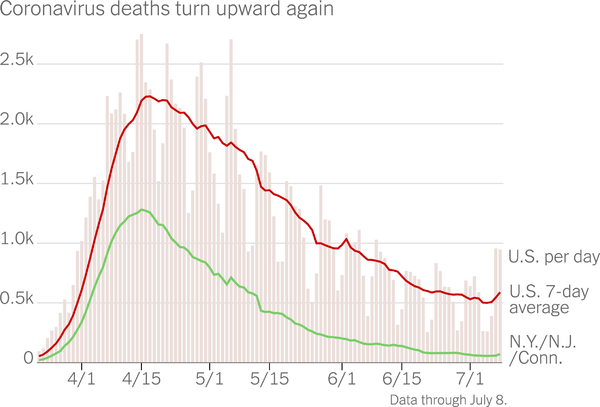The day after the “inspection”, April 8, a fleet of ambulances lined up outside Magnolia to evacuate all 83 residents after the staff refused to show up for work, terrified of the deadly infection already spreading within the facility. Similar scenarios played out across the country this past Spring, survey records show. Time and again, inspectors sent to assess nursing homes’ ability to prevent or contain the virus found no deficiencies at facilities in the midst of deadly outbreaks or about to suffer one.
At Hollywood Premier Healthcare in Los Angeles, inspectors found the facility to be in compliance on March 30. Three days later, the home had 68 confirmed cases, county records show.
State officials conducted five surveys this spring at Kingston Healthcare Center in Bakersfield, which is on a federal shortlist of the worst nursing homes in the country. Each time, the surveyors found the home in compliance with infection control protocols, even as the virus would eventually spread to 158 residents and staff, killing 21.
California Department of Public Health inspectors carried out more than 1,700 “COVID Focused Surveys” at skilled nursing facilities since late March and had issued just 14 infection control citations as a result of those visits.
The refusal or failure of the inspections to identify problems is just the latest indication of how the industry and regulators were unprepared for the coronavirus and failed to act quickly to slow its spread. Nursing homes lacked basic supplies when COVID-19 began sweeping through the facilities.
CMS said more than 5,700 COVID Focused Surveys were completed nationwide. They described the program as “part of the Trump Administration’s historic transparency efforts to ensure residents, families and the general public have information about COVID-19 in nursing homes.” But the Center for Medicare Advocacy, a nonprofit nonpartisan group noted that only 163 of the surveys — less than 3% — had cited any problems with infection control.
With tens of thousands of nursing home residents and staff already dead from the virus, “it is simply not plausible that facilities have no problems in their infection prevention and control practices,” said Toby Edelman, the center’s senior policy attorney.


